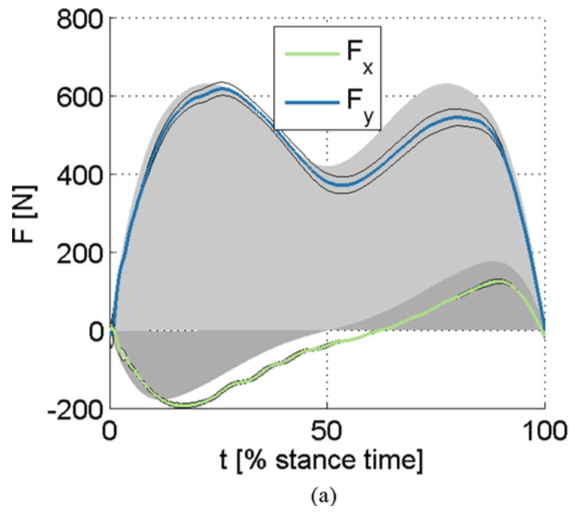
A common approach in designing legged robots is to build fully actuated machines and control the machine dynamics entirely in soft- ware, carefully avoiding impacts and expending a lot of energy. However, these machines are outperformed by their human and animal counterparts. Animals achieve their impressive agility, efficiency, and robustness through a close integration of passive dynamics, implemented through mechanical components, and neural control. Robots can benefit from this same integrated approach, but a strong theoretical framework is required to design the passive dynamics of a machine and exploit them for control. For this framework, we use a bipedal spring–mass model, which has been shown to approximate the dynamics of human locomotion. This paper reports the first implementation of spring–mass walking on a bipedal robot. We present the use of template dynamics as a control objective exploiting the engineered passive spring–mass dynamics of the ATRIAS robot. The results highlight the benefits of combining passive dynamics with dynamics-based control and open up a library of spring–mass model-based control strategies for dynamic gait control of robots.
| Author(s): | Renjewski, Daniel and Spröwitz, Alexander and Peekema, Andrew and Jones, Mikhail and Hurst, Jonathan |
| Journal: | {IEEE Transactions on Robotics and Automation} |
| Volume: | 31 |
| Number (issue): | 5 |
| Pages: | 1244--1251 |
| Year: | 2015 |
| Publisher: | IEEE |
| Bibtex Type: | Article (article) |
| DOI: | 10.1109/TRO.2015.2473456 |
| State: | Published |
| URL: | http://ieeexplore.ieee.org/abstract/document/7270326/ |
| Address: | New York, NY |
| Electronic Archiving: | grant_archive |
| ISBN: | ISSN: 1552-3098 |
BibTex
@article{escidoc:2310483,
title = {Exciting Engineered Passive Dynamics in a Bipedal Robot},
journal = {{IEEE Transactions on Robotics and Automation}},
abstract = {A common approach in designing legged robots is to build fully actuated machines and control the machine dynamics entirely in soft- ware, carefully avoiding impacts and expending a lot of energy. However, these machines are outperformed by their human and animal counterparts. Animals achieve their impressive agility, efficiency, and robustness through a close integration of passive dynamics, implemented through mechanical components, and neural control. Robots can benefit from this same integrated approach, but a strong theoretical framework is required to design the passive dynamics of a machine and exploit them for control. For this framework, we use a bipedal spring–mass model, which has been shown to approximate the dynamics of human locomotion. This paper reports the first implementation of spring–mass walking on a bipedal robot. We present the use of template dynamics as a control objective exploiting the engineered passive spring–mass dynamics of the ATRIAS robot. The results highlight the benefits of combining passive dynamics with dynamics-based control and open up a library of spring–mass model-based control strategies for dynamic gait control of robots.},
volume = {31},
number = {5},
pages = {1244--1251},
publisher = {IEEE},
address = {New York, NY},
year = {2015},
slug = {escidoc-2310483},
author = {Renjewski, Daniel and Spr{\"o}witz, Alexander and Peekema, Andrew and Jones, Mikhail and Hurst, Jonathan},
url = {http://ieeexplore.ieee.org/abstract/document/7270326/}
}
